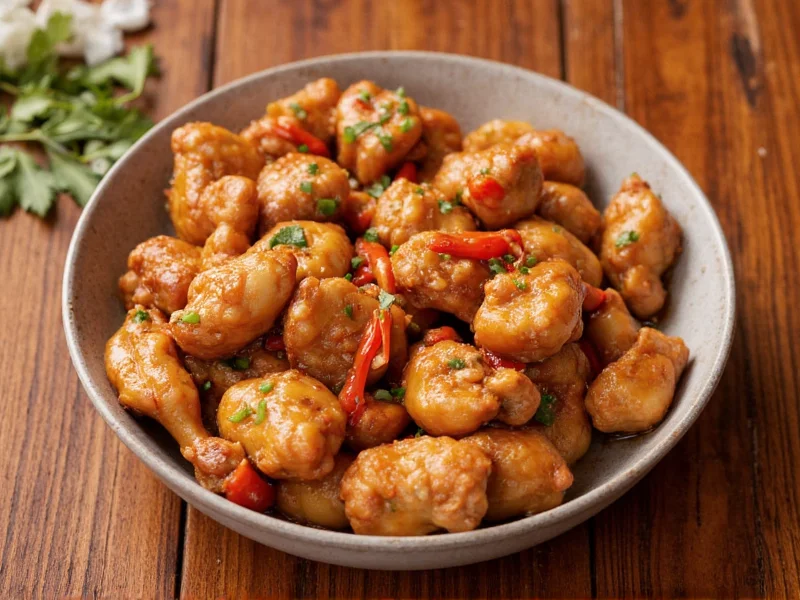When ordering Chinese takeout or browsing a restaurant menu, many diners struggle to distinguish between Hunan and Szechuan chicken dishes. Despite both representing fiery Chinese regional cuisines, these preparations originate from different provinces and deliver distinct culinary experiences. Understanding the authentic differences helps you select dishes matching your flavor preferences and recognize genuine regional Chinese cooking.
Origins of Hunan and Szechuan Cuisines
Hunan cuisine, known as Xiang cuisine, originates from China's Hunan province in south-central China. This mountainous region's humid climate historically encouraged the use of spicy ingredients to combat dampness. Szechuan (also spelled Sichuan) cuisine comes from China's Sichuan province in the southwestern part of the country, where the similarly humid climate led to development of its signature numbing-spicy flavor profile.
Flavor Profile Comparison
The most fundamental difference lies in their flavor philosophies. Hunan cooking emphasizes gan la (干辣) - meaning "dry spicy" - delivering straightforward, intense heat primarily from fresh chili peppers. Szechuan cuisine focuses on ma la (麻辣) - the combination of spiciness (la) and numbing sensation (ma) created by Szechuan peppercorns.
| Characteristic | Hunan Chicken | Szechuan Chicken |
|---|---|---|
| Primary Heat Source | Fresh red chili peppers | Dried chili peppers + Szechuan peppercorns |
| Signature Flavor | Direct, intense heat with garlic notes | Numbing-spicy (ma la) sensation |
| Sauce Base | Broth-based with vinegar notes | Chili oil and fermented bean paste |
| Color | Dark brown, almost black | Bright red from chili oil |
| Texture | Wet, saucy with visible peppers | Drier with visible peppercorns |
| Garlic Usage | Heavy, often whole cloves | Moderate, usually minced |
Ingredient Breakdown
Hunan chicken typically features:
- Fresh red chili peppers (often bird's eye chilies)
- Abundant garlic cloves
- Vinegar or fermented black beans
- Bamboo shoots and vegetables
- Dark soy sauce for color
- Minimal use of Szechuan peppercorns
Szechuan chicken traditionally includes:
- Dried red chili peppers
- Szechuan peppercorns (essential for numbing effect)
- Chili oil and doubanjiang (fermented broad bean paste)
- Less vinegar, more sugar balance
- Onions and bell peppers
- Lighter soy sauce usage
Cooking Techniques Compared
Hunan chicken preparation emphasizes high-heat stir-frying with generous amounts of fresh chilies added throughout cooking. Chefs often use a technique called "dry-braising" where ingredients cook in their own juices with minimal added liquid. The resulting dish appears darker with a thicker, oilier sauce that clings to the chicken.
Szechuan chicken involves a more complex layering of flavors. Cooks typically toast Szechuan peppercorns first to release their aromatic oils, then add dried chilies to the hot wok. The signature numbing-spicy flavor develops through careful timing of when to add the peppercorns relative to the chilies. Authentic Szechuan chicken has a distinctive reddish hue from chili oil rather than the darker brown of Hunan preparations.
Heat Level Misconceptions
Many Western diners assume Szechuan dishes are always hotter than Hunan preparations, but this represents a common misunderstanding of authentic Chinese cooking. In reality, traditional Hunan cuisine ranks among China's spiciest regional styles. The intense heat from fresh chilies in Hunan chicken delivers immediate, straightforward spiciness, while Szechuan's heat comes with the numbing counterpoint from peppercorns that can actually moderate the perceived heat.
When comparing authentic preparations, Hunan chicken typically registers higher on objective heat scales due to its reliance on fresh, potent chilies. However, the numbing effect of Szechuan peppercorns creates a different sensory experience that some perceive as hotter despite potentially lower capsaicin levels.
Western Adaptations vs Authentic Preparations
Most American Chinese restaurant versions of these dishes significantly diverge from authentic Chinese preparations. Westernized Hunan chicken often resembles Szechuan chicken with heavy use of chili oil rather than fresh chilies. Similarly, many "Szechuan" dishes in the West omit Szechuan peppercorns entirely, losing the essential numbing component.
When seeking authentic experiences, look for:
- Hunan dishes featuring visible fresh red chilies and whole garlic cloves
- Szechuan dishes with small, reddish-brown peppercorns visible in the sauce
- Menus specifying "Xiang style" for Hunan or "Chuan style" for Szechuan
- Restaurants owned by chefs with regional Chinese culinary backgrounds
Choosing Between Hunan and Szechuan Chicken
Select Hunan chicken if you prefer:
- Direct, intense heat without numbing sensation
- Garlicky flavors with subtle vinegar notes
- Darker, oilier sauces with visible fresh chilies
- Uncompromising spiciness levels
Choose Szechuan chicken when you want:
- Complex flavor with numbing-spicy sensation
- Bright red color from chili oil
- Layered flavors with fermented bean paste notes
- Slightly more balanced heat profile











 浙公网安备
33010002000092号
浙公网安备
33010002000092号 浙B2-20120091-4
浙B2-20120091-4